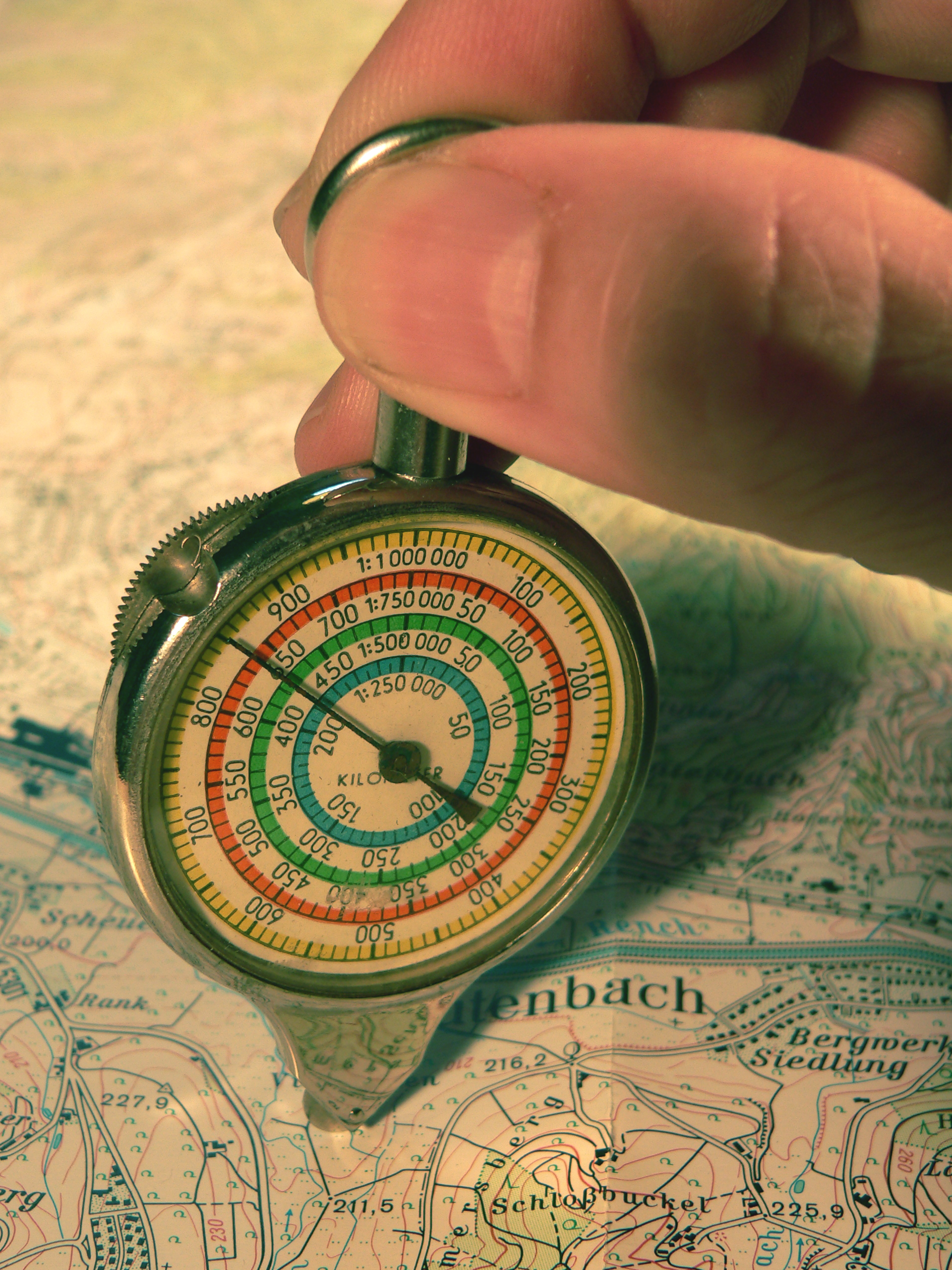 An opisometer, also called a curvimeter, meilograph, or map measurer, is an instrument for
An opisometer, also called a curvimeter, meilograph, or map measurer, is an instrument for measuring
Measurement is the quantification of attributes of an object or event, which can be used to compare with other objects or events.
In other words, measurement is a process of determining how large or small a physical quantity is as compared ...
the length
Length is a measure of distance. In the International System of Quantities, length is a quantity with dimension distance. In most systems of measurement a base unit for length is chosen, from which all other units are derived. In the Inte ...
s of arbitrary curved lines.
Description
A simple opisometer consists of a toothed wheel of knowncircumference
In geometry, the circumference (from Latin ''circumferens'', meaning "carrying around") is the perimeter of a circle or ellipse. That is, the circumference would be the arc length of the circle, as if it were opened up and straightened out t ...
on a handle. The wheel is placed in contact with the curved line to be measured and run along its length. By counting the number of teeth passing a mark on the handle while this is done, the length of the line can be ascertained:
:line length = wheel circumference × teeth counted/teeth on wheel.
In more sophisticated models, sometimes called a chartometer, the wheel is connected via gearing to a rotary dial from which the line length can be directly read.
The instrument is most commonly used to measure the lengths of roads, rivers and other line features on maps. Opisometers designed for this purpose provide scales reading the measured distance in kilometers and miles.
History
Early versions of this instrument werepatent
A patent is a type of intellectual property that gives its owner the legal right to exclude others from making, using, or selling an invention for a limited period of time in exchange for publishing an sufficiency of disclosure, enabling disclo ...
ed in 1873 by the English engineer Edward Russell Morris. The instruments he produced were initially described as a ''Patent Chartometer'' although later versions were sold under the curious name of ''Wealemefna''. Writing in 1881, Morris described how he had created a wholly original name in an attempt to outwit his imitators; he also refused to disclose the origin of the word.English Mechanic and World of Science: Vol. 33, London, 1881
See also
*Planimeter
A planimeter, also known as a platometer, is a measuring instrument used to determine the area of an arbitrary two-dimensional shape.
Construction
There are several kinds of planimeters, but all operate in a similar way. The precise way in whic ...
* Steinhaus longimeter
The Steinhaus longimeter, patented by the professor Hugo Steinhaus, is an instrument used to measure the lengths of curves on maps.
Description
It is a transparent sheet of three grids, turned against each other by 30 degrees, each consisting ...
* Surveyor's wheel
A surveyor's wheel, also called a clickwheel, hodometer, waywiser, trundle wheel, measuring wheel or perambulator is a device for measuring distance.
Origin
The origins of the surveyor's wheel are connected to the origins of the odometer. W ...
References